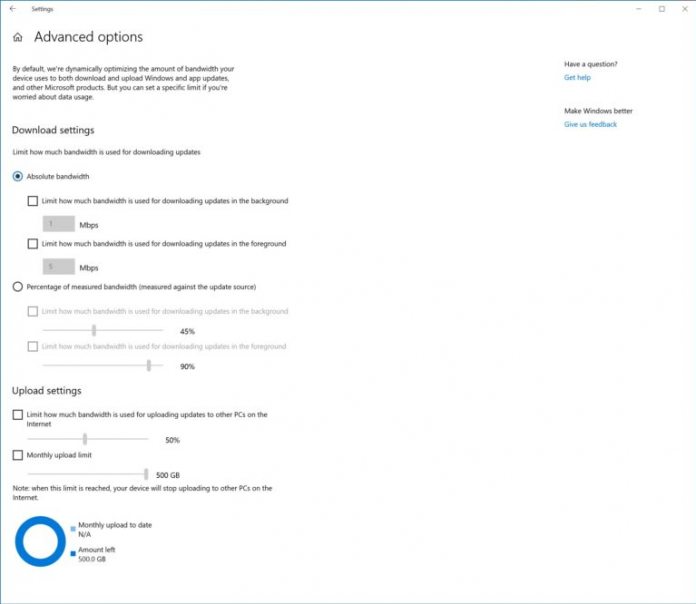For Windows 10 20H1, which will launch next year, Microsoft has now fully introduced Windows Subsystem for Linux 2.0 (WSL 2). We discussed this new WSL version back in May, revealing how the subsystem now supports a full Linux kernel. “The kernel itself will initially be based on version 4.19, the latest long-term stable release of Linux. The kernel will be rebased at the designation of new long-term stable releases to ensure that the WSL kernel always has the latest Linux goodness.” Another new feature that we knew was coming was announced for Windows 10 20H1 yesterday. Microsoft has included an ability for users to control the bandwidth used for updates at an absolute value.
Granular support allows users to choose exact speed in megabits per seconds when downloading new Windows 10 updates. The Windows native Narrator application is also gaining an improvement through preview build 18917. Specifically, the app is now better at narrating tables by reading the header first before moving onto cell information and then row/columns data.
Bug Fixes and Known Issues
Bug fixes This 20H1 build includes the following bug fixes and improvements:
Fixed an issue where some users experienced a 0x8007000E error code while downloading the build due to high RAM consumption. Fixed an issue where users couldn’t use the desktop Features on Demand “add a feature” option. An issue where dragging the emoji and dictation panels was unexpectedly laggy. Rolled out a change to address an issue where if the taskbar was set to autohide, launching the Start menu would first hide the taskbar before bringing up the Start menu. Fixed an issue resulting in the Start menu and taskbar going 100% transparent on secondary monitors or after projection. Updated the new File Explorer search experience to now be dark when used in dark theme. Note – this experience is still in the process of rolling out. Fixed an issue where Windows Security would crash if launched from Settings when using an Arabic display language. Fixed an issue where the audio service might hang on shutdown if spatial audio was turned on.
Known issues This build has nine known issues:
This update might fail the first time you try to download it with a 0xc0000409 error code. For Home editions, some devices might not see the “update installed” on the update history page. For Home editions, some devices might not be able to see the “download progress %” change on the Windows Update page. There has been an issue with older versions of anti-cheat software used with games where after updating to the latest 19H1 Insider Preview builds may cause PCs to experience crashes. Make sure you are running the latest version of your games before attempting to update the operating system. Some Realtek SD card readers are not functioning properly. Tamper Protection may be turned off in Windows Security after updating to this build. You can turn it back on. When using the Bopomofo IME, the character width is suddenly changed to Full width from Half width. File Explorer search is rendering in an unexpectedly small area and clicking it results in a crash. If you install builds from the Fast ring and switch to either the Slow ring or the Release Preview ring, optional content such as enabling developer mode will fail. You will have to remain in the Fast ring to add/install/enable optional content. This is because optional content will only install on builds approved for specific rings.




